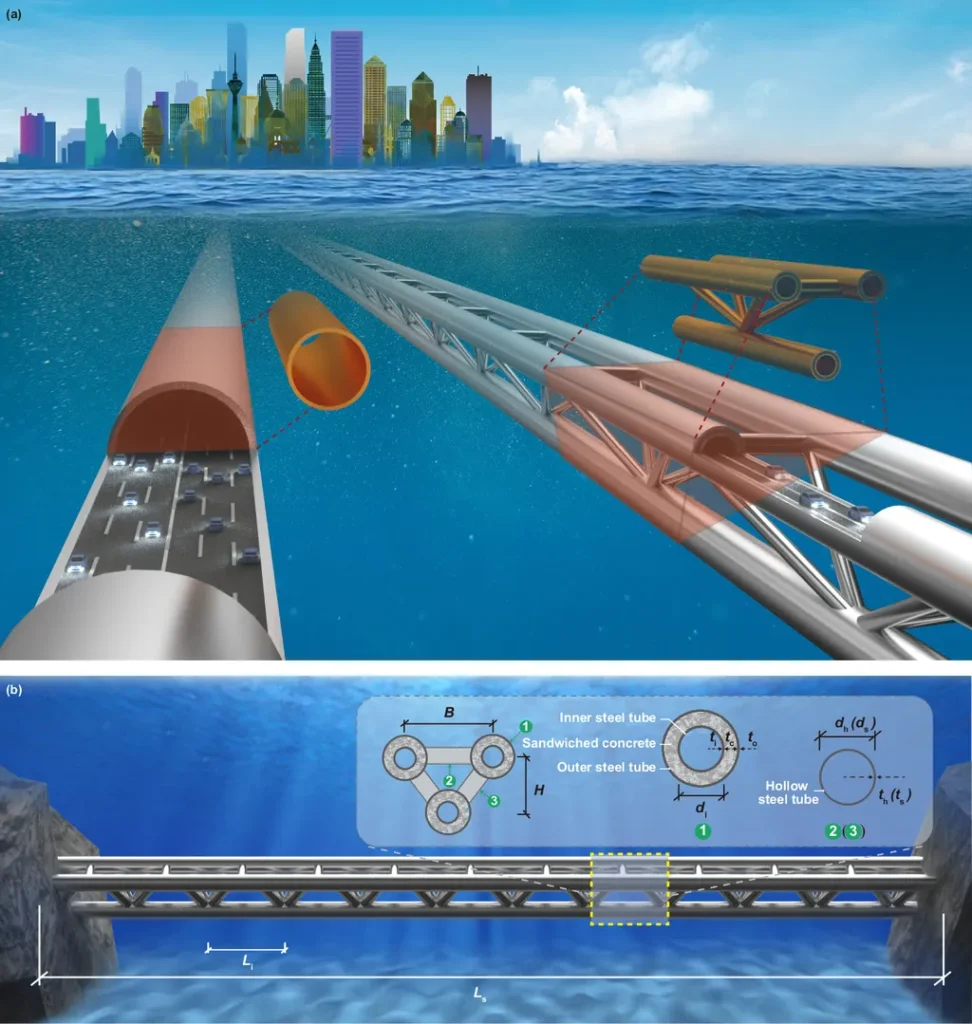In the realm of deep-water crossings and intercontinental transportation, a groundbreaking concept has emerged that could reshape the future of submerged floating tunnels (SFT). Researchers, led by Fa-Cheng Wang from the School of Civil Engineering at Tsinghua University, have introduced a novel design that promises to enhance structural performance and economic viability in harsh marine environments.
The proposed design, detailed in a recent study published in *Communications Engineering* (translated as “Communications in Engineering”), leverages a triple-chord trussed concrete-filled double-skin tubular (CFDST) hybrid structure. This innovative approach combines CFDST chords with hollow steel tubular braces, creating a synergistic system that can withstand a multitude of loading conditions, including lateral flow, internal fire, fatigue, and impact loading.
“Our design is highly adaptable,” explains Wang. “The steel tubes and sandwiched concrete work together to achieve efficiency in resisting various environmental and operational stresses.”
The research team developed a multi-scale structural analysis methodology that integrates three-dimensional solid finite element (3-D FE) and simplified fibre modelling. This approach allows for efficient evaluation of global deformations, fire performance, and joint behaviour. The results are promising, demonstrating significantly enhanced resistance against lateral flow loading, vibrations, and internal fire, all while being more adaptable and cost-effective than existing solutions.
The implications for the energy sector are substantial. Submerged floating tunnels could revolutionize the transportation of energy resources across deep-water bodies, providing a stable and efficient infrastructure that can withstand the harshest conditions. This could lead to more reliable and cost-effective energy distribution networks, ultimately benefiting both the industry and consumers.
As Wang notes, “This design could open up new possibilities for deep-water crossings and intercontinental transportation, making it a game-changer for the energy sector.”
The study’s findings not only highlight the potential of the triple-chord trussed CFDST hybrid structure but also pave the way for future developments in the field. By integrating advanced materials and innovative design concepts, researchers are pushing the boundaries of what is possible in civil engineering, offering solutions that are both robust and economically viable.
As the energy sector continues to evolve, the need for reliable and efficient transportation infrastructure becomes increasingly critical. The research led by Wang and his team at Tsinghua University represents a significant step forward in meeting these challenges, offering a glimpse into the future of submerged floating tunnels and their potential impact on the energy sector.

